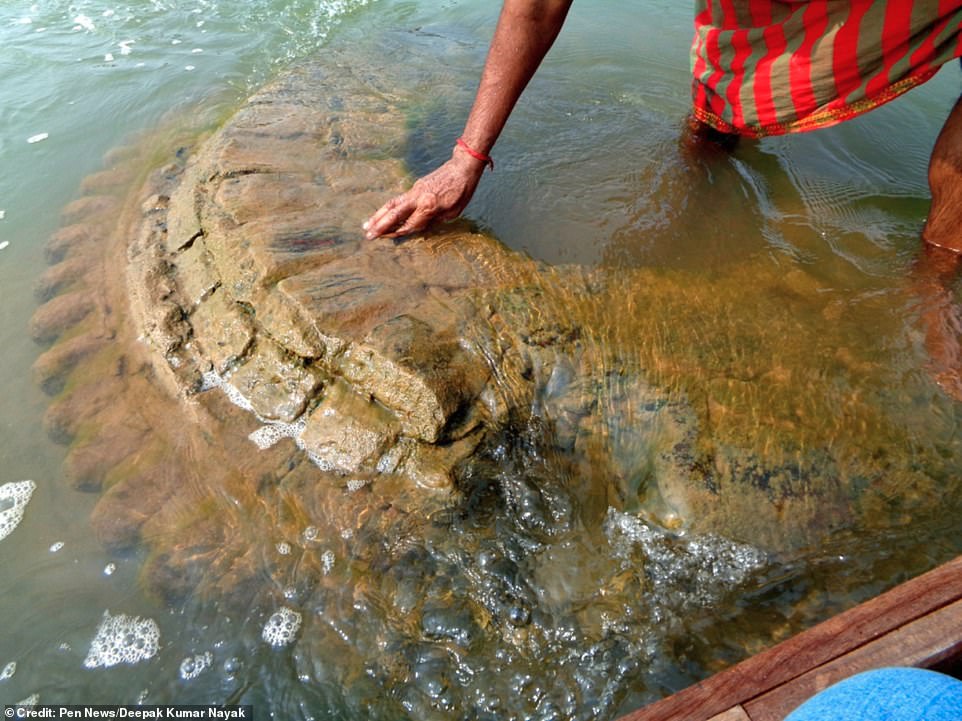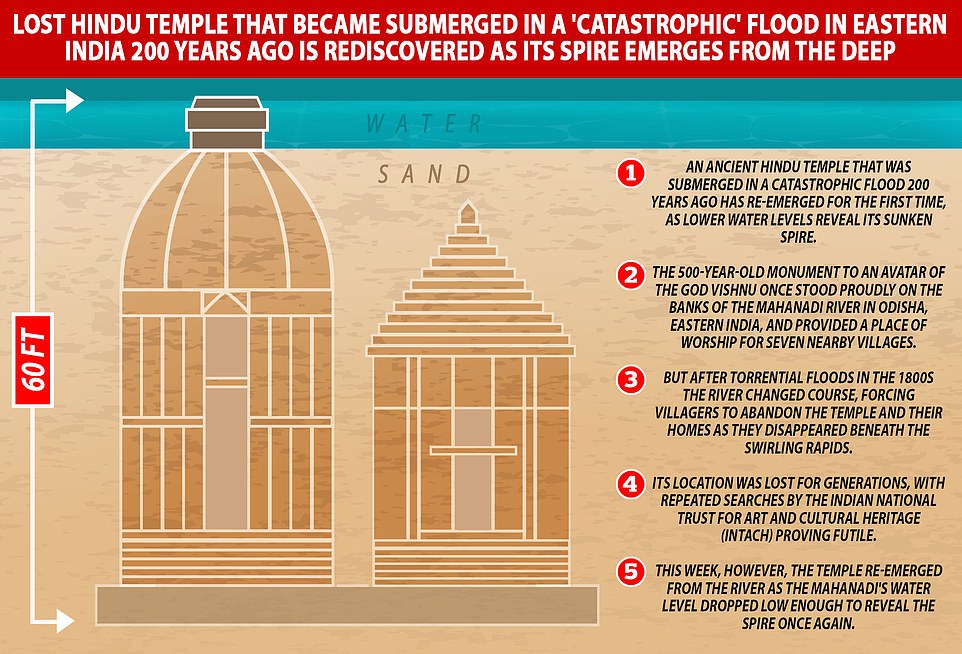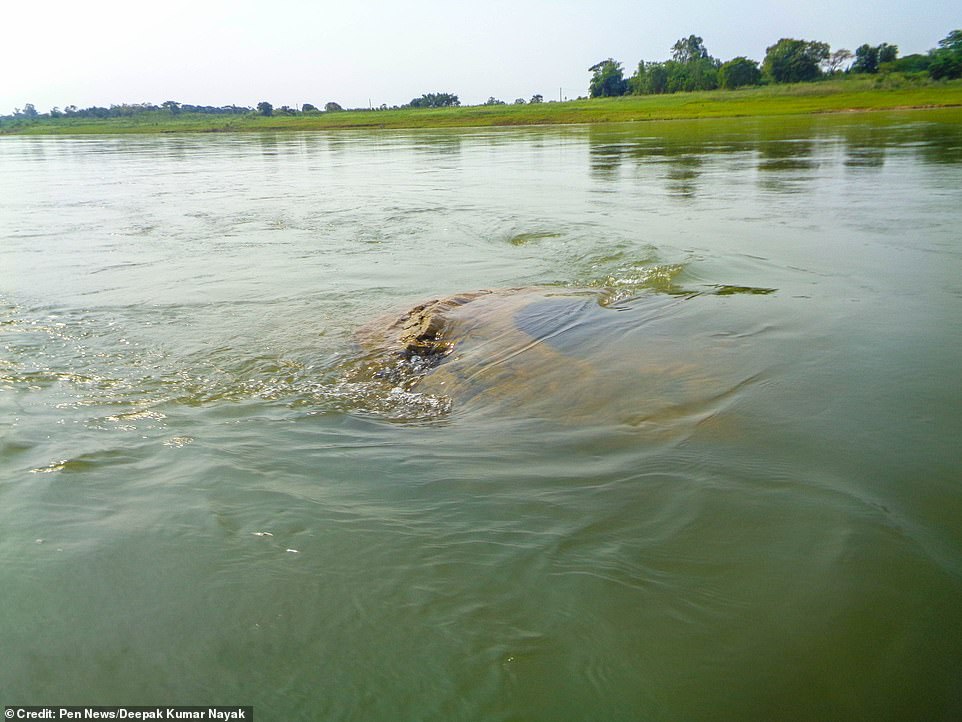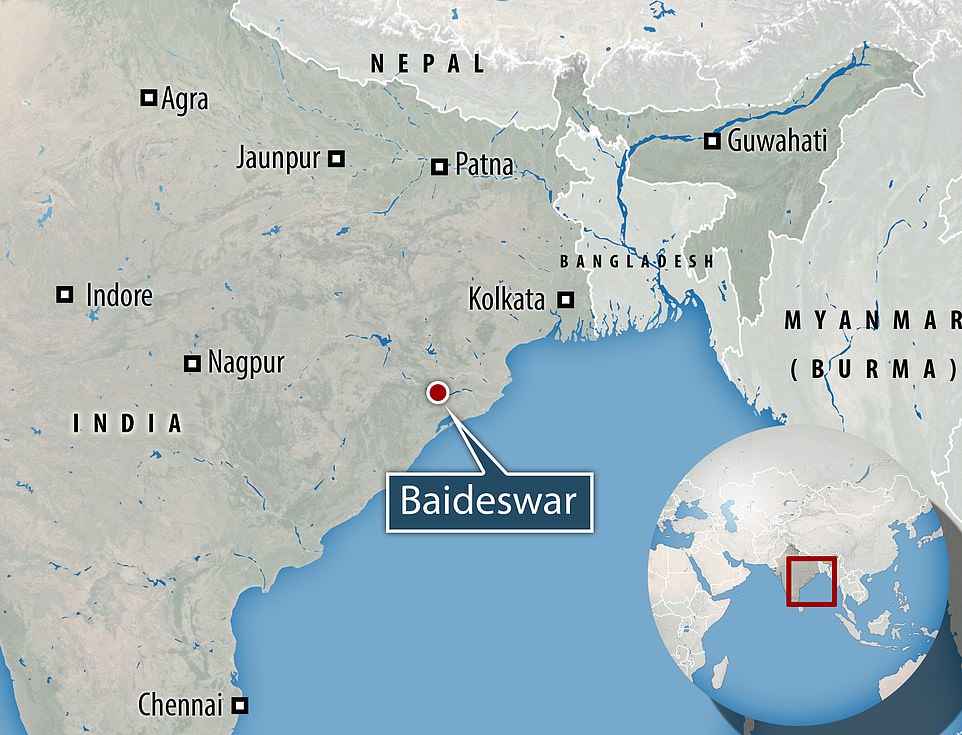A 500-year-old temple in India that was once lost to flooding has been rediscovered after its spire has emerged from the river.
The temple known as Satapatana was once located between seven villages in Odisha, eastern India. Unfortunately, between 1830 and 1840, the Mahanadi river began to flood catastrophically, completely submerging the temple.

Residents of the seven nearby villages had evacuated the area in search of higher ground but kept a token of the sunken structure, a black chlorite idol of Lord Gopinath who was a form of the God Vishnu, in order to place it in a newly built place of worship.
The lost temple was actually well documented and used to poke out of the river during the summer months but when a barrage was constructed and the water level was raised then the temple was thought to be lost forever.

And indeed, it has been 20 years since anyone has witnessed a trace of the temple. Leader of the discovery team of the Indian National Trust for Art and Cultural Heritage, Anil Dhir even stated in relation to the building:
Only the old timers knew about it.
Dhir’s team were tasked with finding the temple once again but even he admitted he didn’t think it could be done. However, last week locals informed the team that the spire of the temple had once again been discovered, emerged from the water.
![]()
The team had documented that the round spire or the amalaka, which marks the top of the main tower of the temple, was clearly visible in the river. Unfortunately, only about three metres of the temple are sticking out of the water leaving the rest of its 18 metres submerged in the sand.

But the sand has actually helped to preserve the temple and keep it in a healthy state. Dhir explained:
It’s in a perfect state of preservation. Nearly all the rivers in Odisha have submerged temples, but many of them are in ruins. Temples were built in the bends of rivers, and all these rivers were and are flood prone, so bank erosion resulted in many of them being destroyed or submerged by the waters.

The temple had a long history and is said to be built by a local king in the sixteenth or seventeenth century but there are no plans to excavate the rest of the temple and for very good reason.

The is fear that if the structure was uncovered then looters would try to rob the sacred space of its artefacts. Not to mention the river is particularly dangerous and its swift currents could make excavation a long and risky procedure.

